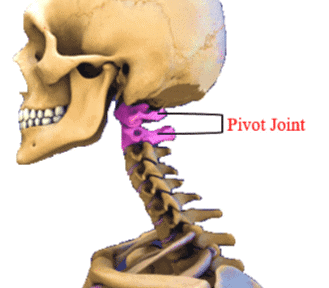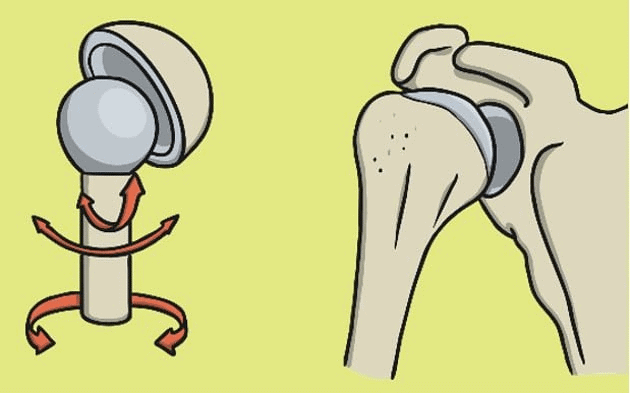Class 6 Science Chapter 5 Extra Question Answers - Body Movements
Extra Questions
Q1: What is main function of the skeleton system?
Functions of the skeletal system:
- It gives shape and provides supports to the body.
- It forms the framework of the body.
- It protects some internal organs.
Q2: Name the various organs of the skeletal system.
Various organs of the skeletal system are: skull, vertebral column, rib cage, bones in arms and legs, shoulder bone and hip bone.
Q3: Give an example of pivot joint in the human body.
The joint where our neck joins the head is a pivotal joint
Q4: What is slithering movement?
Movement of a snake is called slithering movement.
Q5: How many vertebrae are found in the human backbone?
There are 33 vertebrae in the human backbone.
Q7: How does a snake move?
A snakes moves by making loops on its sides.
Movement of Snake
Q8: How does a fish swim in water?
When a fish swims; its front part curves to one side and the tail part stays in the opposite direction. In the next move, the front part curves to the opposite side and the tail part also changes its position to another side. The tail fin helps in changing direction.
Q9: How does the snail move?
A snail moves using its muscular foot.
Q10: How many bones are found in the human skeleton system?
There are 206 bones in the human skeleton.
MCQs
Q1: A Skeletal System consists of __________
(a) Bones and muscles
(b) Muscles and nerves
(c) Bones and nerves
(d) Bones and cartilages
Ans: (d) Bones and cartilages
The skeletal system is primarily made up of bones and cartilages.Muscles and nerves are part of different systems in the body.
Q2: Which animal has a hard outer shell but does not have bones?
(a) Earthworm
(b) Snail
(c) Fish
(d) Bird
Ans: (b) Snail
A snail has a hard outer shell for protection but does not have a skeleton made of bones. Instead, it has a soft, flexible body inside the shell.
(a) Tail Fins
(b) Wings
(c) Legs
(d) Bristles
Ans: (a) Bristles
Tail fins help fish steer and maintain their direction while swimming. They provide balance and help in propelling the fish forward.
(a) Hinge joint
(b) Ball and Socket Joint
(c) Pivot joint
(d) Fixed Joint
Ans: (b) Ball and Socket Joint
The ball and socket joint allows for rotational movement in all directions, such as in the shoulder and hip joints
(a) jaw
(b) elbow
(c) knee
(d) shoulder
Ans: (d) shoulder
The shoulder does not have a hinge joint; it has a ball and socket joint that allows for rotational movement in multiple directions. The jaw, elbow, and knee all have hinge joints, which permit movement in one direction, like bending and straightening.
(a) epithelial tissue
(b) muscular tissue
(c) connective tissue
(d) nervous tissue
Ans: (b) muscular tissue
Muscular tissue is responsible for movement in the body. It contracts and relaxes to enable movement of limbs and other body parts.
(a) outer parts of ear
(b) at the end of nose
(c) discs between vertebrae of the backbone
(d) all of the above
Ans: (d) all of the above
Cartilage is found in multiple parts of the body. It forms the structure of the outer parts of the ear, is present at the end of the nose, and also makes up the discs between the vertebrae of the backbone. Thus, all the listed locations are examples where cartilage is present.
(a) Tiger
(b) Earthworm
(c) Fish
(d) Bird
Ans: (b) Earthworm
Earthworms do not have bones; they have a hydrostatic skeleton. Tigers, fish, and birds all have bony skeletons.
(a) Earthworm
(b) Cockroach
(c) Snail
(d) Tortoise
Ans: (c) Snail
Snails move using a single large, disc-shaped muscular foot. This foot helps them glide along surfaces.
|
137 videos|271 docs|60 tests
|
FAQs on Class 6 Science Chapter 5 Extra Question Answers - Body Movements
| 1. What are the types of body movements? |  |
| 2. Can you give examples of voluntary movements? |  |
| 3. What are examples of involuntary movements? |  |
| 4. How do muscles help in body movements? |  |
| 5. Why is it important to have a good range of body movements? |  |



















